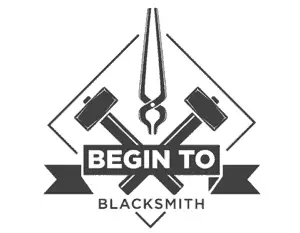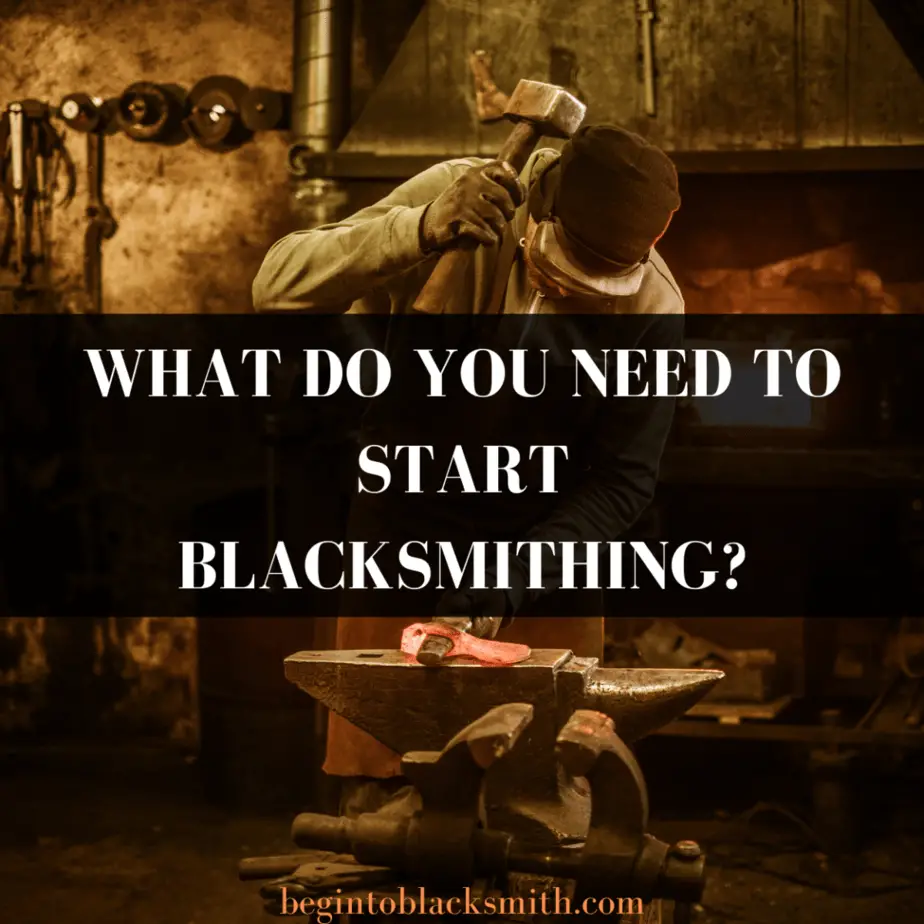Starting blacksmithing is not that difficult. On the whole, it depends on your project and what you are looking for exactly. In this guide, we are by no means saying that our way is the only way to start blacksmithing since this field is packed with diversity. We are just showing you how we started it exactly.
If you are interested in fire, sparks, and creativity, blacksmithing is for you.
You have to be strong in it, but not rude; kind, but not weak. It is an ancient art that has inspired people for thousands of years and compelled influential people to share its importance with the public through quotes and sayings. For that reason, if you are keen to start basic blacksmithing, just remember, you must hammer and forge your creativity first.
You are an ARTIST.
Because metal is worthless until you shape and temper it. Below are a few important tools that you need to start blacksmithing. The most interesting thing is once you become an expert in blacksmithing, you can make many unique tools yourself.
1. Forge
In general, a forge is used to heat the metal. It is a type of hearth where the metal is heated to a temperature where work hardening no longer occurs.
Some people call it a blacksmith’s workspace too. Every forge must have some form or hearth or furnace that makes the metal, usually iron, really malleable. Some forges use coal as their main energy source while others count on gas. The difference between both of them is, the coal models take longer to bring up to a working temperature, whereas gas forges provide instant and constant heat; you don’t have to work on the gas models once they are lit. They require little or no attention at all. This makes them more convenient than coal forges.
If you are new to blacksmithing, we recommend gas forges. Because coal forges are more traditional and they are hard to maintain. Without any experience or skill, it can be frustrating to maintain the coal fire and work on your projects simultaneously.

The main advantage of coal forges is you can forge large items. Gas forges don’t give you this benefit; they are mainly used for forging smaller items like knives and horseshoes. Another drawback of gas models is most of them can’t produce a proper welding temperature for forging.
2. Anvil
It is the main work surface.
Anvil shape has evolved greatly. First, they were made of stones in the earliest ages, then bronze and iron, and now steel is the material of choice today. Some low-end anvils still count on cast iron as it absorbs more of the hammer blow’s energy.
There are some wrought iron and cast iron models too with a smooth working surface of hardened steel, and they are preferred by many professional blacksmiths.
The structure of the anvils often baffles beginners.
Its face is hardened and tempered to survive the blows of a hammer, therefore, it doesn’t deform even under repeated use. The horn, on the other hand, is used to form various shapes. For all kinds of bending operations, it works like magic.
In an anvil, you will notice a step area as well; it is between the horn and main face surface. Blacksmiths use this area for cutting purposes.
We also have square holes and round holes in modern anvils. They are for punching and bending operations.
3. Hammer
Blacksmith hammers are known as ‘Forging Hammers‘.
They weigh roughly 2 to 3 pounds. Many experts believe that a forging hammer should have lightweight for consistent use but you have to make sure it isn’t less than 1.5 pounds. Forging hammers that are extra lightweight don’t give any significant benefit.
Technically, you can smack the metal with anything but the hammers get the job done easily and don’t cause any elbow pain.
Besides, there are some metals and projects that require a certain amount of force upon them. It is imperative to choose and use a hammer according to their requirements.
We know some people reason that ‘a hammer is a hammer’ but this term doesn’t have any value in the world of blacksmithing. It is pertinent to analyze the different types of hammers and you have to decide which style and function are going to work for you.
Blacksmith hammers come in different types like ball-peen, straight peen, flatters, sledges, etc.
If it is your first time, ask yourself what type of smithing are you going to be doing mostly. For example, for creating decorative metal pieces, a goldsmith’s hammer or riveting hammer is great. In case you don’t have any idea regarding what you are going to create, opt for Cross Peen Hammer; it is a good general-purpose hammer and complements all operations.
4. Tong
This is an indispensable tool for blacksmiths.
Blacksmiths use it to hold the hot metal that they are working with. That’s why a good set of tongs is necessary for an effortless grip. Without a tong, it will be almost impossible for you to work on your projects.
They are available in many designs, types, and materials.
- Flat Jaw Tongs: These tongs have rectangular grabbing points for holding flat metal pieces.
- Duckbill: This model has flat jaws and blacksmiths use it for moving flat stocks.
- Bolt Tongs: They have rounded gripping points and they are used for metals with holes.
- Spreading Tongs: These tongs are good for detailed bending and adjusting.
- Rivet Tongs: They are used for grasping rivets; they are like pickup tongs for small objects.
All these tongs can vary in size.
Longer tongs are suitable for gas forges, while smaller tongs work better with a coal forge. You can even make your special tongs and sell them to make some extra money.
Conclusion
These are some basic things you need to start blacksmithing. You can have some other tools as well like drifts, slitters, and twisting tools as you develop your skills. Blacksmithing isn’t hard, but going beyond the hobbyist level requires another level of commitment and expense.
Begin to Blacksmith is a participant in the Amazon Services LLC Associates Program, an affiliate advertising program designed to provide a means for sites to earn advertising fees by advertising and linking to Amazon.com. I get commissions for purchases made through links in this post.


